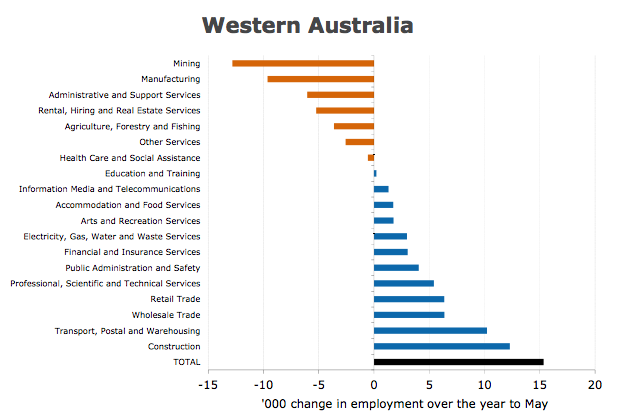ANZ’s economic update is out this afternoon with some interesting data on the Australian labour markets in the March QTR via the ABS.
- Employment in goods producing industries fell by around 20K persons for thesecond consecutive quarter, with construction employment retracing some of thegains over the six months to February. Mining employment fell 2% over the three months to May and almost 6%, or 16K persons, over the year. Manufacturing employment (8% of the total) continued to decline and was 1.7% lower over the year to May.
- Goods distribution employment is estimated to have fallen by 17.5K persons but this followed three quarters of very strong growth, with year-ended growth at arobust 5%. Employment in wholesale trade unwound much of the suspiciouslylarge gain over the three months to February, and transport and related employment also declined. Year-ended employment growth was, however, robust inboth industries.
- Retail trade employment jumped sharply over the latest threemonths, with year-ended growth consistent with the pick-up in retail trade output.
- Business services employment stabilised over the three months to May after falling over the prior three quarters. Over the year, business services employment declined 3%, with weakness broadly based. This weakness has followed a prolonged period of strong growth and, in broad terms, presumably reflects a focus on costs andefficiency among a wide range of businesses. Employment in some sectors that had previously benefited from strong mining and related activity has also been adversely affected.
- In contrast, employment in household services continued to expand strongly overthe latest three months; presumably this has been supported by relatively strongpopulation growth. Over the year to May, employment growth was particularly strong in health, accommodation & food services and other services.
- Public administration employment is estimated to have risen strongly over the three months to May and by around 4½% over the year. This ongoing strength continues to be at odds with sluggish growth in government spending.
- Agriculture employment is estimated to have fallen by almost 10% over the year to May. While this might overstate the true weakness, it is consistent with challenging conditions being faced by parts of the farming sector – nearly all of the net joblosses were in sheep, beef cattle and grain farming.
- Age-based figures show that labour market conditions for youths have remained very challenging. The participation rate among 15-24 year olds has fallen by more since the GFC than it did following the early 1990s recession inAustralia
- The number of unemployed made redundant remains elevated and has picked up in NSW, WA and South Australia. More encouragingly , however,the share of full-time workers on reduced hours for economic reasons has fallen in recent months, particularly in NSW
So, the rebalancing in the labour market to date is basically falls in productive sectors and rises in unproductive, especially shopping:
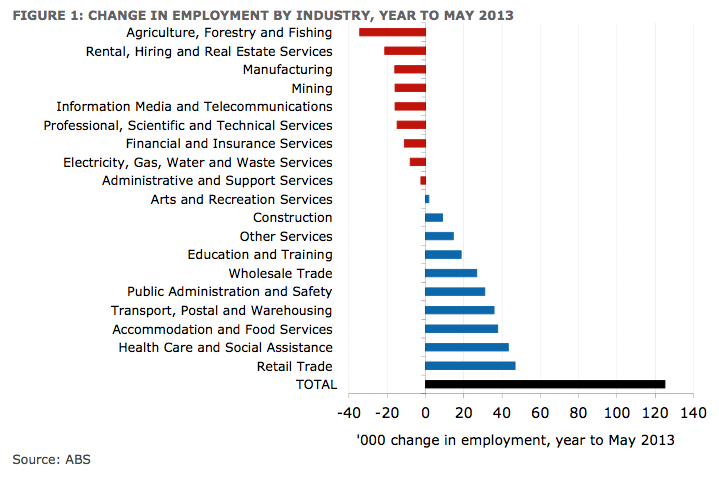
Advertisement
Of note are the reasons for unemployment showing an upward trend in “involuntary” losses.
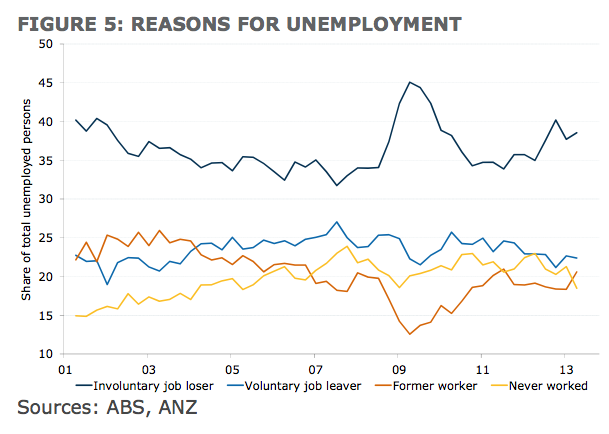
Mining is now in rollover, as in construction, while services power on:
Advertisement
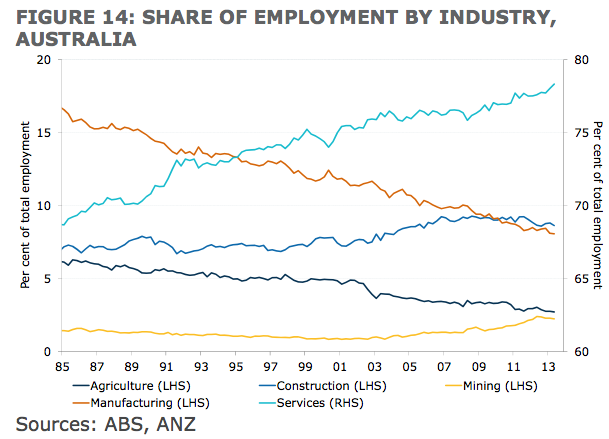
At the state level, its shop ’till you drop in NSWow:
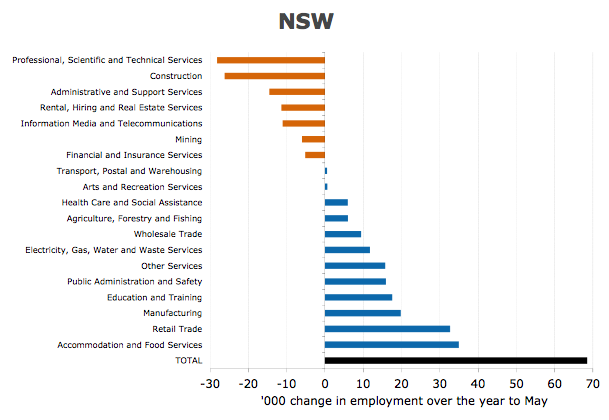
Advertisement
It’s sickly in Victoria:
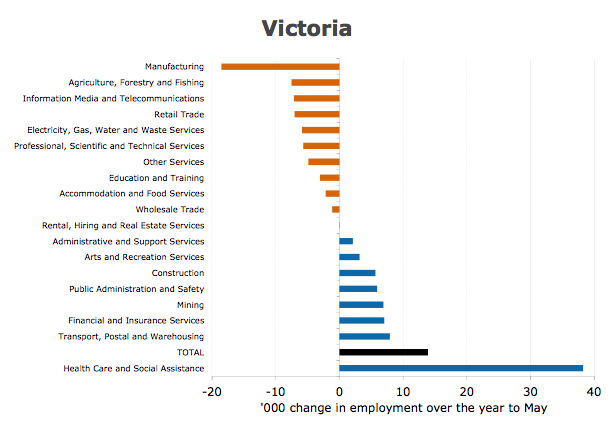
Queensland continues to be powered by the mining boom:
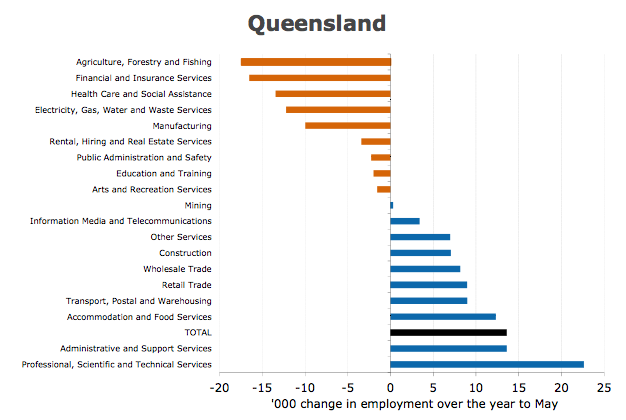
Building stuff in WA still, just not so many mines:
Advertisement
